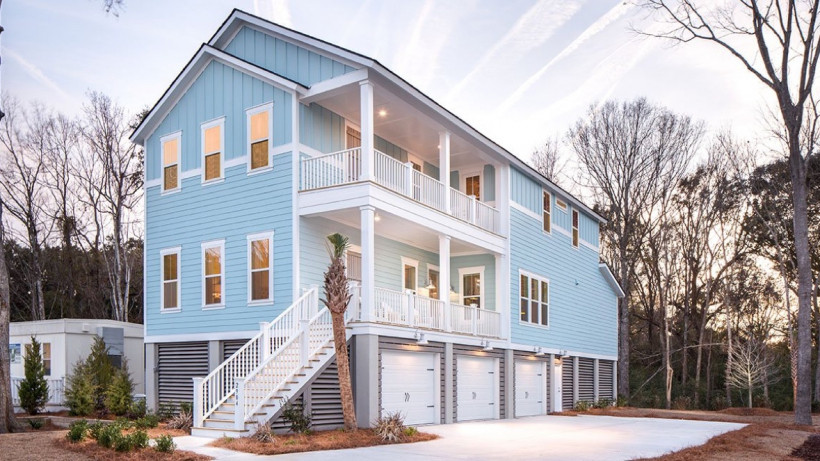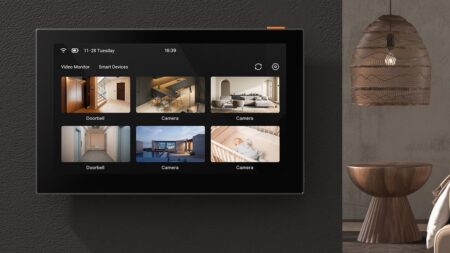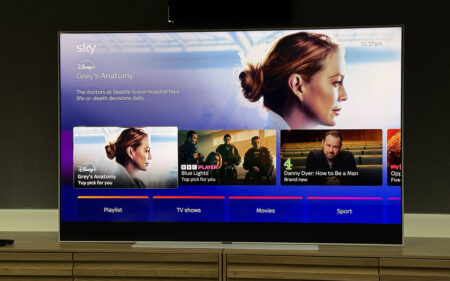This home is fully automated before you move in
Do most people really want a smart home, they just don’t know it yet? That’s what Lennar, one of America’s largest homebuilders believes, and that is why the 65-year-old company announced last year that it would outfit all its new homes with home automation tech as standard.
Those new homes – equipped with Wi-Fi Certified home design, Alexa voice control, and a starter kit of smart home tech – have now started to roll on to the market. We went to check one out in Mount Pleasant, South Carolina.
The Calhoun
Tucked away off an idyllic oak tree lined road in the town of Mount Pleasant, just north of Charleston, SC, Hamlin Oaks is a small, planned development of 15 homes situated on a cul-de-sac. The first solar-powered community in the area, Hamlin Oaks features “Charleston Singles” – a traditional building style in South Carolina where the home is only a single room wide but extends deep into the lot. However, the tradition stops as soon as you walk in the front door.
The home we toured was Lennar’s The Calhoun model, a 3,200 square foot luxury floor plan featuring five bedrooms, four and a half bathrooms, an open plan kitchen/living/dining area, three covered porches and a three-car garage. With all the expected high-end features – granite countertops, pendant LED lighting fixtures, vaulted ceilings and such – when it goes on the market it will fetch somewhere in the mid $600,000s. Included in that price tag will be a home well-equipped with smart home technology.
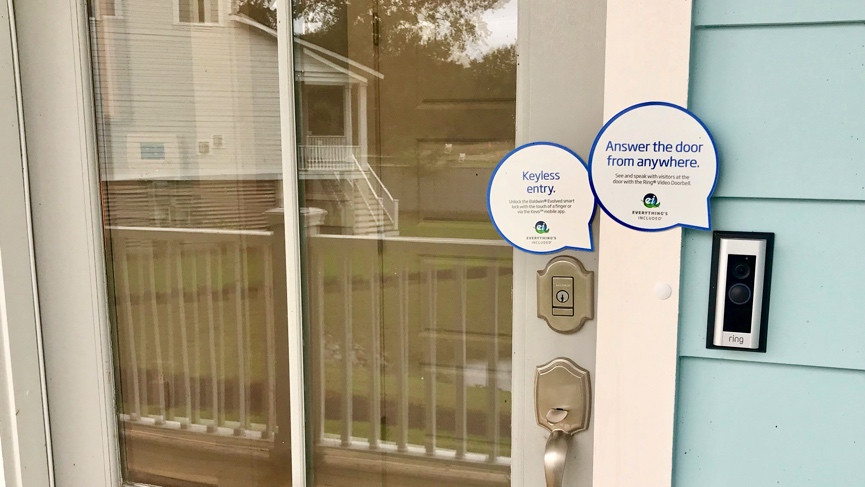
A Ring Pro and Baldwin smart lock set the tone for this smart home.
The first piece of tech to greet you is at the front door. A Ring Pro Video Doorbell and a Baldwin “touch-to-open” smart lock, powered by Kwikset’s Kevo, allow the homeowner to see who’s at the front door – from their smartphone or the Echo Show in the kitchen – and also open the door with an app, by touch, or with a regular key.
Lennar new home consultant Debbie Kaufman says this combination is definitely the most popular feature of the home among those she has shown around so far. “Safety is the biggest draw of the smart home technology for them,” she says, adding that for most viewers it’s been their first experience of smart home technology. “They’ve heard of Alexa, but they’ve never really understood it.” Once they get inside however, she says it’s hard to get them to leave. “I’ve had a few customers just sit in here and play with Alexa for an hour!”
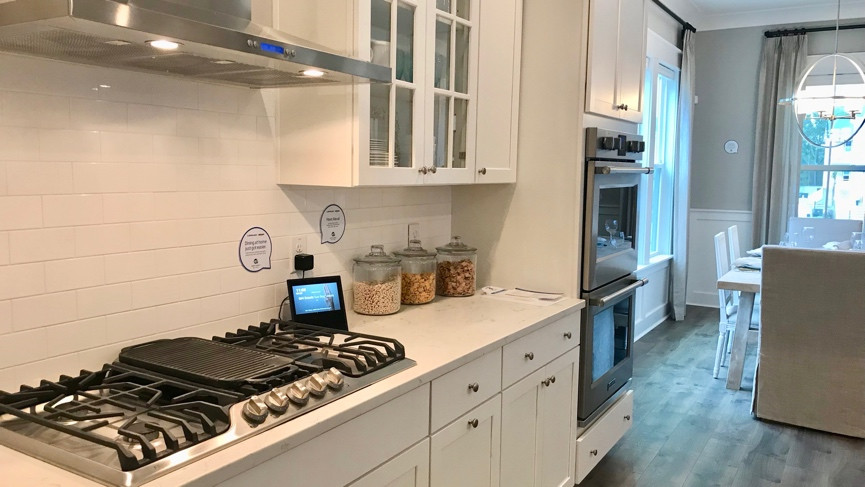
Alexa runs the “show” in the kitchen and around the house.
Voice controls everywhere – or not
Inside, Alexa is certainly the main attraction. Strategically placed speech bubbles offer suggestions of things you can ask it to do. In the kitchen, ask the Echo Show, which stands out against the stylish white subway tile backsplash, “Alexa, turn on Cooking Time” and it will turn on the Lutron Caseta smart light switches, open the Lutron smart shades and play music from a Sonos sound bar underneath the Samsung Smart TV, which can be operated with voice too, via a Leviton Smart Plug, powered by SmartThings.
Alexa offers similar scenes in the master bedroom. Ask the Echo Dot on the bedside table “Alexa, turn on Relax,” and it lowers the shades halfway, dims the lights and the lamp connected to a Lutron Caseta lamp module, and plays soothing rainforest music from a Sonos PLAY:1. You can also ask it to adjust the climate and the Honeywell Lyric smart thermostats, one on each floor, respond accordingly.
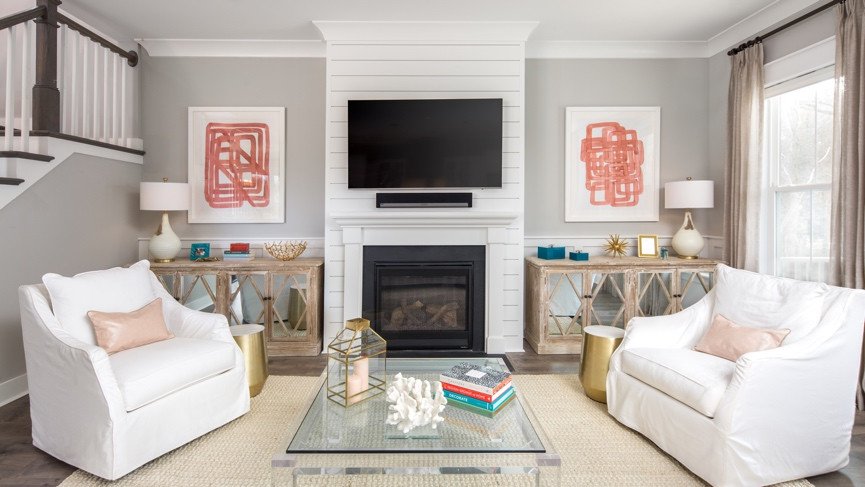
The Samsung Smart TV, here with a Sonos soundbar, is voice operated via a smart plug.
Everything in the house is designed to work with Alexa, but crucially, everything will also work if you don’t want to use the voice assistant. This is a key aspect of the Lennar’s “Everything Included” approach to the smart home – it’s a smart home but it can also be a dumb home. The company is betting that people will enjoy and use this technology, which is why it is largely all included as standard (the Lutron smart shades and Sonos soundbar in this home are not standard).
More pics from around the house
For those who don’t want Alexa or home automation in their lives, the light switches still work, the door will still unlock with a regular key, and you can turn the thermostat up and down manually. If whoever buys this house does decide they want Alexa, a team from Amazon Home Services will come and set it all up to their specific needs.
For a true smart home geek, the gadgets in this home are fun and the whole set-up is pretty cool, but there’s nothing groundbreaking here. Also, all the smart home devices are downstairs only, which is a bit of a letdown. Once you get upstairs, you’re flicking your own light switches. However, what is really interesting about this home, is its bones.
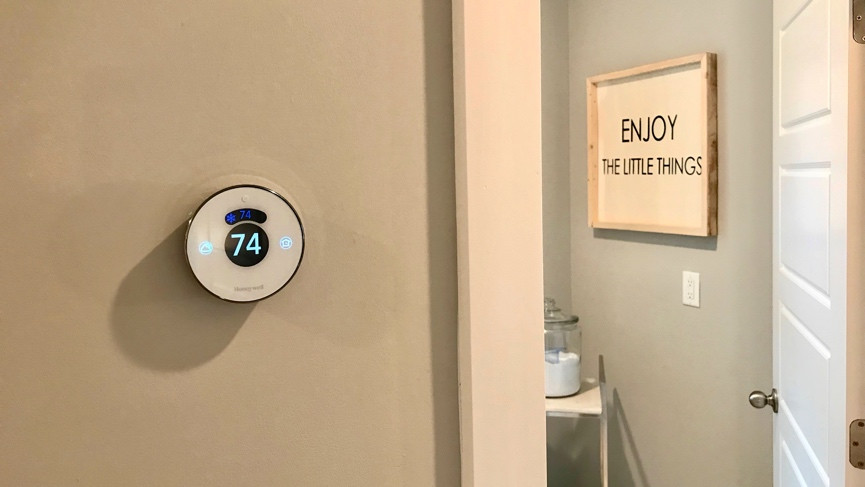
Honeywell’s Lyric thermostat is controlled by app, voice or setting up geofencing.
The Calhoun, and all new Lennar homes, are specifically designed to the new Wi-Fi Certified Home Design standard, produced by the Wi-Fi Alliance. Lennar was the first homebuilder to implement this, betting on the fact that while devices may come and go, a solid infrastructure is a very valuable feature in a home.
“We live in a connected world, but most existing homes simply weren’t built for that world – leading to frustrating dead spots,” David Kaiserman, president of Lennar Ventures, said last year when the Home Design program was announced. “By engineering state-of-the-art Wi-Fi right into the design and construction of every new Lennar home, the way we do plumbing and ventilation – and then bringing it to life with Amazon Alexa – families will be able to enjoy a connected lifestyle to the fullest.”
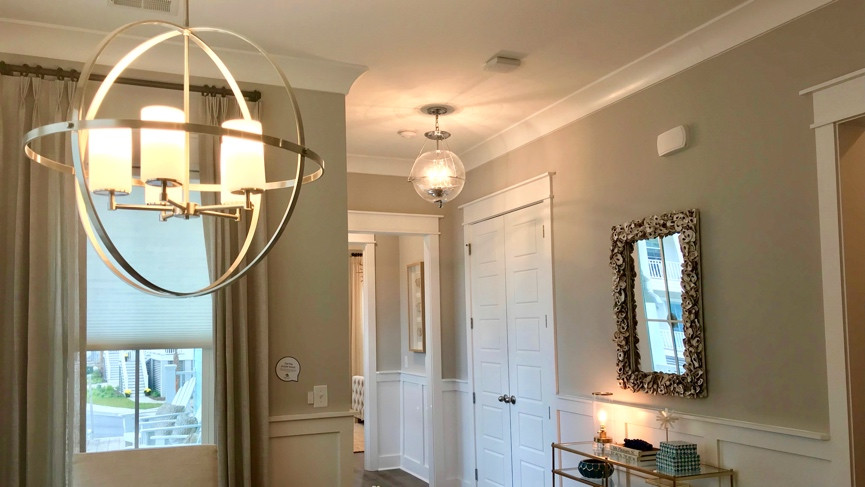
A Ruckus Wi-Fi Access Point in the hallway pumps high speed Wi-Fi around the house.
Each home is heat mapped to discover any Wi-Fi dead spots, and then two Ruckus Wi-Fi Access Points are installed in strategic locations. These are wired to a Ruckus 12 port network switch. “This is the backbone of the home automation program,” says Justin Martin, a Lennar home automation specialist.
“This is what allows everything to work really well. The Ruckus devices are consumer-grade Wireless Access Points on steroids. We wire them with Cat 6A cabling, powered over Ethernet, which allows speeds up to 10GB per second. We’re future proofing the homes.”
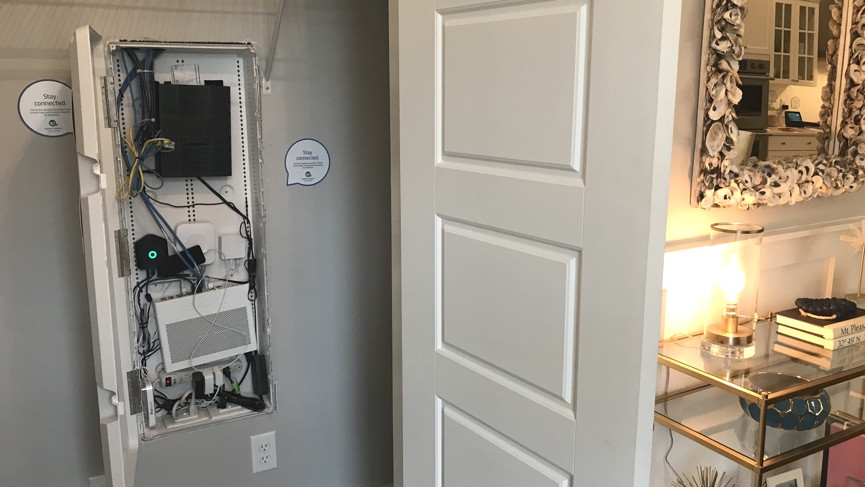
The home’s mission control panel is packed with hubs.
The Ruckus switch sits in a Legrand Transparent Structured Media enclosure – i.e. Mission Control for the home. Hidden away in the hall closet, all the unsightly wires and hubs are neatly packaged in here. The Internet Service Provider’s modem has a spot, along with the hubs that power most of the home automation functions: a Kevo smart bridge for remote control of the door lock, a Lutron Hub to power the Caseta lighting and smart shades, and a SmartThings hub, which only operates a Leviton Smart Power outlet, but with this Z-Wave and ZigBee compatible hub in the home, opportunities for expansion are there.
“We’ve given a basis for the homeowners to start on,” says Martin. “And then they can customise as they see fit.”
This home is exactly that, an excellent starter smart home you could live in comfortably as is, or build on top of its strong bones and turn it into something really smart.
Image credits: Lennar Coastal Carolina/Jennifer Patison Tuohy


